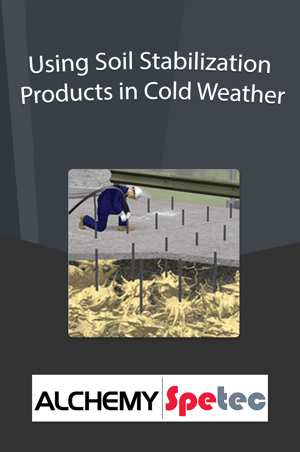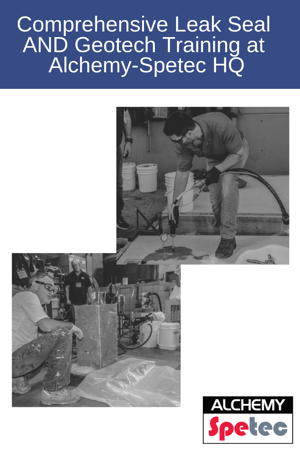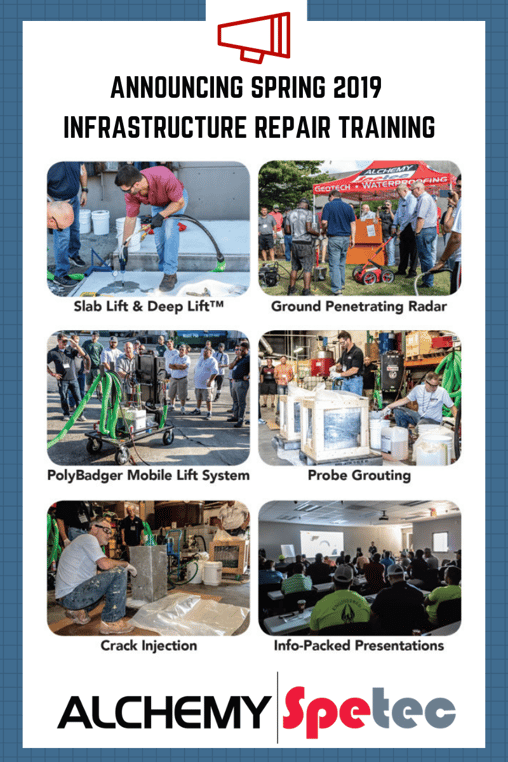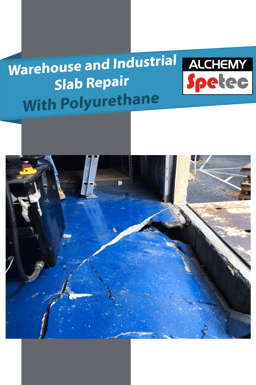
 In this blog post, we will share some tips for stabilizing soil in cold weather. The two main points to remember are – make sure the ground isn’t frozen and condition your material and equipment properly.
In this blog post, we will share some tips for stabilizing soil in cold weather. The two main points to remember are – make sure the ground isn’t frozen and condition your material and equipment properly.
Do Not Attempt Soil Stabilization Work When the Ground is Frozen
If you’re considering soil stabilization in cold weather, the first step is to make sure that the water table isn’t frozen. Iced earth is not permeable enough for proper mixing of resin and soil. If you attempt to proceed with frozen soil, you’ll just be wasting your material. Best to wait it out in that case.
Properly Condition Equipment and Materials
For optimal results, it’s best to store any materials and equipment that are to be used in a heated environment over night. It’s best to keep your AP Soil 600 above 60 degrees at all times. This is key because cold material reacts slower and gets thicker. The methods you use to condition your material on the job site will depend on the type of vehicle you’re using.
In Slab Lifting in Cold Weather, we described in detail how to condition materials for cold weather if you’re using a rig…
If you have an insulated rig, it should stay around 40 degrees warmer than outside temperatures. Most foam rigs have built in electric heaters that require an extension cord to a power outlet at the job site or at your facility for overnight storage. Alternately, you could buy an electric radiator heater. Other available heating devices include drum band heaters and heated drum mats (be careful not to scorch the polymers by turning band heaters up too high). For a more DIY approach, you could build a hot box around the material storage area in your rig.
If you’re using pails and a smaller vehicle, we offered tips for that set up in my Polyurethane Leak Seal in Cold Weather article…
Use an enclosed vehicle, like a box truck, enclosed trailer or pickup truck with a camper top or bed cover. Keep as much material and equipment inside the vehicle as possible when working. Use a portable heater to maintain a warm temperature. You can also use electric pail heaters to keep your resin ready for action.
Using a combination of the methods described above, you should be able to keep your materials warm enough. In extreme cases when the material gets a bit too cold and thick, you may want to use AP Cat 600 to speed up the reaction time.
Conclusion
As long as the ground isn’t frozen, you should be able to stabilize soil in cold weather. Just make sure your materials and equipment are conditioned properly. If you have any further questions, please contact us at 404-618-0438.
Want in-depth info on soil stabilization products?












 See live product mixing demos!
See live product mixing demos!
 Thursday - Leak Seal
Thursday - Leak Seal
 In this blog post, we will share some tips for stabilizing soil in cold weather. The two main points to remember are – make sure the ground isn’t frozen and condition your material and equipment properly.
In this blog post, we will share some tips for stabilizing soil in cold weather. The two main points to remember are – make sure the ground isn’t frozen and condition your material and equipment properly.

 Voids beneath concrete slabs can be filled with two component polymer foam designed to work in wet or dry conditions.
Voids beneath concrete slabs can be filled with two component polymer foam designed to work in wet or dry conditions. 

 One of the hidden dangers a warehouse or industrial property owner and their employees can face is an unstable or sunken slab with a large void underneath. The last thing anyone wants is injury and/or a lawsuit resulting from an un-repaired trip hazard or worse - a complete slab collapse. Take a good long look at the photo in today's blog graphic. This occurred when a forklift carrying a heavy piece of equipment crossed a slab with an un-detected void underneath. Luckily, no one was injured.
One of the hidden dangers a warehouse or industrial property owner and their employees can face is an unstable or sunken slab with a large void underneath. The last thing anyone wants is injury and/or a lawsuit resulting from an un-repaired trip hazard or worse - a complete slab collapse. Take a good long look at the photo in today's blog graphic. This occurred when a forklift carrying a heavy piece of equipment crossed a slab with an un-detected void underneath. Luckily, no one was injured.

 Powerful Polymer
Powerful Polymer